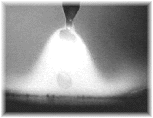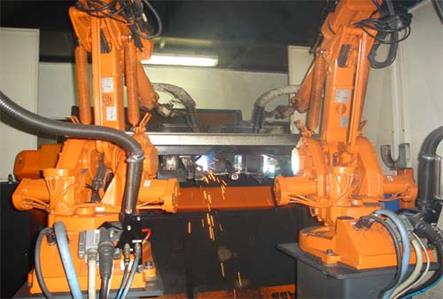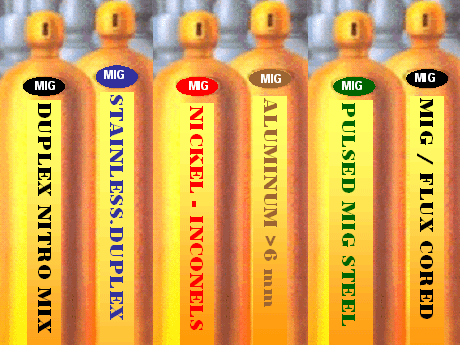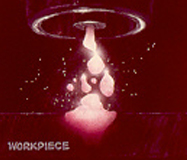 |

|
Welcome to the world's largest web site on MIG , Flux Cored and TIG. Weld Process Controls & Best Weld Practices. To get to the root cause of GMAW (MIG) & Flux Cored (FCAW) weld issues, requires Weld Process Control - Best Practice Expertise, & lots of Weld Reality. The site provides the MIG - Flux Cored and TIG weld information and data required to attain the highest possible manual and robot weld quality, always at the lowest possible weld costs.
This web site was first established in 1997 by Ed Craig. Contact Ed. ecraig@weldreality.com
The MIG Welding Process Control Quiz.
Written by Ed Craig.
IN ANY GLOBAL WELD SHOP THE WELD DECISION MAKER HAS TWO CHOICES, THEY CAN EITHER "PLAY AROUND" WITH THEIR MIG & FLUX CORED WELDING PARAMETERS, OR THEY CAN BE A WELD PROFESSIONAL, AND SHOW THAT THEY ARE IN CONTROL OF THE WELDING PROCESS.
So you recognize that with your bad back, you dont want to be handling steel when you are in your 60's, and so you decide to apply for a job running a weld shop that has both Manual and Robot MIG & Flux Cored welds. It's possible, that some of these 30 MIG questions below may come up. Also you may want to check the flux cored weld test.
- Welding common 1/16 (1.6 mm) sheet metal ducts made out of both carbon steels and stainless. The welders are using digital wire feeders in which the wire feed rate is indicated in inch/min (or m/min). You tell the welders who are using 0.035 (0.9mm) MIG wires and argon - 20% CO2 to use the optimum, Short Circuit wire feed, and voltage which is?.
Answer. Opt 0.035 wire Short Circuit Wire feed setting is.___Optimum Short Circuit Weld Volts is.____
- With an 0.035 (0.9 mm) MIG wire, and argon - 20% CO2 gas mix, the robot technician has to set robot parameters to weld common, 0.080, (2 mm) gage carbon steel parts. As with many pulsed MIG power sources, the pulsed part of the MIG equipment in the robot cell has not been working well, so the decision is made to use regular CV MIG settings. For the required thin "lap welds". What MIG weld transfer mode should be selected for this robot weld, and what wire feed setting, (or amps), volts and weld travel speed would be set?
Answer. Weld Mode_____Wire feed_____ Approx. Amps___.__ Volts___ Weld Travel____ ipm.
And the Spray Transition point with each MIG wire diameter,
is also an optimum start point with any pulsed MIG weld.
Regular CV MIG. This is what the start point of Spray looks like.
Note in the 1980s video with a power source with no electronics,
no spatter when the weld parameters are correctt.
- With the manual welds, the "start point of spray transfer" (see above) can be readily used on the 1/8 to 3/16 (3 to 5 mm) carbon steel parts. The welder is using 0.045 (1.2mm) MIG wires. The welder asks what is the spray transfer start point wire feed and the voltage? Also the weld supervisor, wants to know how much MIG wire to order. The welder will average 30 minutes arc on time each hour, and the job is expected to last for 100 hours.
Answer. WF ___ inch/min. Volts__ Hourly Deposition Rate _____lb/hr x 100hrs = _____
Which of the following is considered an optimum Short Circuit "weld Voltage range" for either an 0.035 or an 0.045 (1 - 1.2 mm) wire?
[a] 12 - 18 volts [b] 17 - 24 volts
[c] 13 - 18 volts [d] 16 - 20 volts.
Answer_____volts.
Why should welders avoid the back hand technique when MIG welding thin< 2 mm gauge steels or stainless parts?
Answer. ________________________
- What is the best "weld position" to weld the out side edge welds or any welds on parts 16 gage or less?
Answer. ________
Short Circuit Video made in the 1980s.
Without costly power source electronice,
when set correct, NO SPATTER.
- You want the welders to "know when to use the Short Circuit weld transfer mode". Which of the following is the manual welded recommended "part thickness range" using an 0.035 (1mm) wire for short circuit transfer?
26 gauge to 16 gauge, / 18 gauge to 12 gauge, / 14 gauge to 8 gauge.
Answer.____________gauge.
- Provide robot pulsed or low spray weld data for the 1/8 (3 mm) carbon steel fillet welds. The fillet joints are welded vertical down. Most parts have a 0.030 to 0.050 weld gaps. The wire is 0.035. (1mm) wire and Ar - 10% CO2 is used.
Answer. Wire Feed Rate____ Volts____ Weld Travel Rate_____
- What is the minimum steel thickness that can you manual MIG weld with an 0.035 wire and argon - 15 - 20% CO2 using the spray transfer mode? [b] Also why is this thickness increased if the welds are made on a robot?
Answer._____________ Answer [b] __________________
- Which of these MIG gases will provide "Dissociation benefits" in the weld arc?
[a] argon oxygen mix, argon helium mix, argon hydrogen mix, argon carbon dioxide mix.
[b] What is MIG gas dissociation and how does it benefit a MIG weld?
[c] Which gas mix provides higher oxidation, argon - 2% Oxy or an argon 15 % CO2 mix?
Answers [a]_______________[b]________________________[c]___________________
- The 3/16 (4.8mm) stainless MIG application can be welded using a low spray setting with an E316. 0.045 (1.2mm) MIG wire. Provide the wire feed rate and weld voltage. The welder has an arc on time that averages of 20 minutes each hour. How much stainless weld wire is required, for each 8 hour shift.
Answer. WF_____ inch/min. Volts____Deposition___lb/hr.
- Provide three reasons that any helium - argon - CO2 mix would be an unrational choice for gauge stainless?
Answer_______________________________________________________________________
- The welder is ready to weld a 3/16 (5mm) carbon steel fillet weld. Using spray transfer and an 0.035 (1.2mm) carbon steel wire with argon 10 - 20 % CO2, select the wire feed rate, voltage, weld deposition.
Answer. WF ___inch/min. Volts__ Deposition__ lb/hr.
- The pulsed MIG welds have undercut so you adjust what?
Answer____________________________________________________________________
- Using argon 10 - 20% with an 0.045 (1.2mm) E70S-3 wire, provide an optimum, manual 1/4 (6 mm) fillet weld with the spray transfer mode. On the digital feeder, provide the wire feed setting, voltage and deposition rate.
Answer. Wire feed __inch/min. Voltage___ Deposition Rate___ lb/hr.
- The weld shop robot welds mostly gauge to 3/16 steel parts, select the best gas from these three mixes and explain your choice.
[1] Argon 20% CO2. Argon 15% CO2. Argon 10% CO2.
Answer. Wire Feed___Voltage__ Weld Travel ___Best Part Position___
Why was the 75-25% CO2 gas mix a poor choice?__________________
With Ed's unique clock method, MIG weld parameter
selection is simplified and easy to remember
For Ed's robot process control training program, click HERE.
- Without changing the pulsed or spray MIG wire feed setting, the robot technician decided the weld could be a little smaller and so the technician increased the robot weld travel rate. Which of the following would the technician then typically have to adjust to compensate for the increase in that robot weld travel rate?.
[a] Increase the weld volts. [b] Decrease the weld volts.
Answer. _____ Explain why.______________________________________
- With robot welds, the robot operator is changing the contact tips too frequently during the shifts. Also the daily weld production is greatly influenced by the robot down time that is occuring with the MIG wire burn backs to the contact tips. Most of the wire burn backs seem to occur during the weld starts. The weld and weld start data with the Argon – 20% CO2 mix and 0.045 (1.2mm) wire, is Wire Feed 420 ipm. Volts 30V. What changes would the technician do to reduce to the wire burn backs and the contact tip issues?
Answer. ______________________________________________________
- The robot cell is using an 0.045, E70S-6 wire, with an 80 argon 20% CO2 mix. Both the weld and the weld end data wire feed is set at 320 inch/min. The volts were 24V. There is a large drop on the end of the wire at each weld end. Weld start issues are also frequent in this robot cell. Explain why the issues are occurring, and what is the parameter solution?.
Answer: ___________________________________The solution is ____________
When I was either the marketing or training manager at Airgas, AGA, Praxair
and Liquid Carbonic, I developed logical two component gas mixes, and presented
them in cylinders that looked like this. Vist the MIG gas section
Ed too the BS out of gas mixes and introduced these
important gas mixes to North America,
[] argon - 2 oxy [] argon - 5 oxy [] argon - 10 CO2 [] argon - 8 CO2 - 2 Oxy,
[] argon - 15 C02 [] argon - 20 CO2. [] argon - 25 CO2
Answer.______________________Why____________________________________
Most weld shop that have welders using settings in the spatter producing globular mode are not aware of what globular transfer is or how to set parameters to avoid this weld mode.
- The manual MIG weld transfer is an erratic, globular mode producing lots of hard to remove spatter. The weld wire is 0.035 (1 mm) and gas is 80% argon - 20% CO2. The carbon steel parts welded are 3 - 4 mm. The weld data is 180 amps at 24 volts, what adjustments to the weld parameters do you make to reduce this globular transfer and explain why?
Answer.___________Why__________________________________________________
- The robot welder is setting multi-pass welds on a 60 degree Vee Groove steel plates that are one inch, (25 mm) thick. The robot multi-pass groove welds will be in the flat position. With the 0.045 (1.2mm) MIG wire and 15% CO2 gas, provide the wire feed rate, voltage, travel rate, for the optimum stringer fill passes.
Answer. Wire Feed___ inch/min. Weld Volts____ Weld Travel________________
- The weld shop has to MIG weld thin gauge (0.040 to 0.080), 300 series stainless parts with an 0.035, (1 mm) E309 MIG wire. The gas salesman has recommended the common three part helium tri-mix, (90% He - 7.5% Ar - 2.5% CO2). They have weld burn through and distortion issues so why is this global tri-mix gas mix a stupid choice. What is the optimum gas mix and why?
Answer. The Tri Mix is the worst choice because.__________________
Answer. The correct gas choice for thin stainless parts should be the one Ed introduced which is _____________
- The welders will manually MIG weld 1/8 to 1/2 (3 - 12 mm) Aluminum parts with the fore-hand technique. The weld shop has both pulsed MIG and regular CV MIG equipment. The aluminum parts are clean, however a common problem with both the pulsed MIG and spray welds is extensive black soot occurs either side of the welds. What simple weld parameter adjustment would instantly decrease the black soot, and why does this weld parameter adjustment work?
Answer. The MIG weld parameter adjustment is_______
Answer. This parameter adjustment works because,_______
- The manual welder is using argon - 25% CO2, with 0.045 steel wire welding clean carbon steels > 4 mm. No matter what the weld parameters are there is extensive weld spatter, why?
Answer.________________________And the solution is ________________________Why________________
- With a manual MIG weld, what should be the maximum single pass fillet weld size for;
[a] a Horizontal fillet._______ WHY_____?
- What is the minimum weld voltage required when robot welds are made with spray transfer, using the ver common 0.045 (1.2 mm) wire with argon - 20% CO2?
[a] 22 volts [b] 24 volts [c] 26 volts [d] 28 volts [e] 30 volts [f] 32 volts
Answer_______volts.
- Using an 0.052, (1.4 mm) steel MIG wire, what is the minimum part thickness you can manually spray weld without concerns for weld burn through issues.
[b] Also what is the minimum weld current required to attain spray with that 0.052 wire?
Answer. _________________[a] min_____amps
.- With an 0.045 (1.2 mm) MIG wire and argon - 15 to 20% CO2 gas, the welders are welding a 10 gauge carbon steel part to a 3/16 (5 mm) part. The weld current is 240 amps with 24 volts. The parts are covered with difficult to remove weld spatter and the contact tips need changing frequently. Why?
Answer.____________________________________
- The pulsed MIG stainless welds are providing less weld fusion than what used to be attained when the MIG spray welds were made with the same weld wire and similar wires feed rate. Provide an explanation why?
Answer_________________________________
- The weld shop is using a 70S-6 wire and argon 20CO2 mix. The paint department is complaining that the robot carbon steel MIG welds have too many shiny black slag islands on the surface and they come loose after the paint is applied. Explain why the E70S-6 wire is the wrong choice.
Answer. ________________________Wire___________ Gas Mix_________
- To cut down on the weld spatter, you need to inform the welders about the globular MIG weld transfer that occurs with the common, 0.035 - 0.045, E70S-6 wires and argon 15 to 20% CO2
Answer. The glob Wire Feed and Voltage range for 0.035 is ______For the 0.045 wire its_____
- You rotate your steel pipes and want to start using MIG short circuit for the open roots. Provide the optimum SC weld parameters for an 0.035 wire and argon - 25% CO2. Provide the wire feed, volts and travel rate. Explian why with this application is that short circuit mode just as good as the STT from Lincoln and the RMD from Miller.
Answer WF_____Volts______Travel______inch/min.
THESE ARE JUST SOME OF THE QUESTIONS ANSWERED IN MY PROCESS CONTROL SELF TEACHING - TRAINING PROGRAMS.
What do you think? Are questions like these relevant to your weld shop or to your future weld career prospects?
To attain Ed's MIG - FCAW Weld Process Controls - Best Weld Practice Self Teaching / Training Resources visit weld reality or click here.
Want to try the flux cored weld Test.




